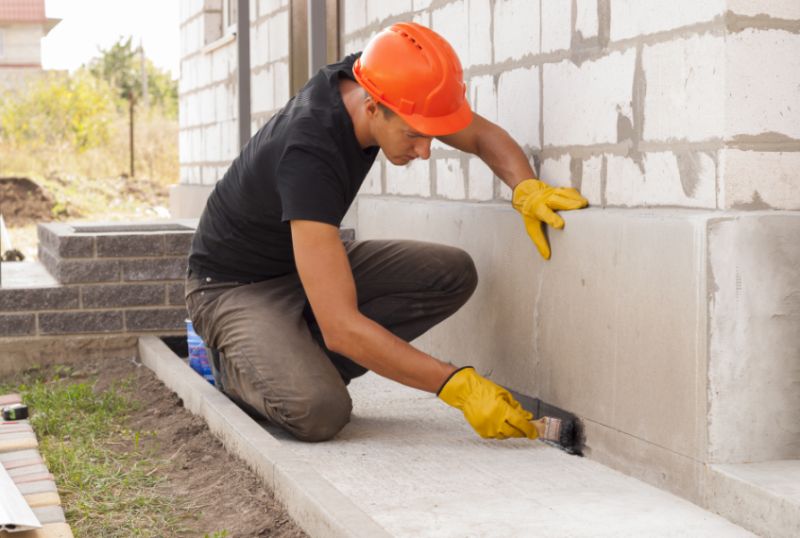Foundation problems pose a risk to the stability and soundness of your home. Issues such as gaps and deterioration can cause significant damage to your home’s exterior and interiors, making it unsafe for occupancy.
If your house is constructed on expansive clay or improperly compacted fill soil, or there’s poor drainage nearby, or perhaps it’s situated near a tree with growing roots, then foundation problems are more likely to occur. While there are various signs of foundation problems you can look out for, it’d be good to note that no foundation damages are alike.
With that said, it’s always best to get the services of professionals when it comes to inspecting and assessing the health and condition of your house’s foundation. Furthermore, hiring a foundation repair services company can help identify the cause of damage and recommend the appropriate steps to address the issue.
So, if repair is necessary, how do you prepare for it? This article will outline some suggestions to help ensure that your house is ready for foundation repair.
1. Clear Your Landscaping
Depending on the extent of the foundation repair to be done, you may need to remove some plants to clear the path where machines and equipment will likely pass through. If your property has extensive landscaping, you can hire a landscaping contractor to help you prepare your plants and trees for removal or possible relocation.
Getting the services of professionals may entail extra expense on your end, but it can help ensure that your plants survive even after being relocated. In addition, after the repair works and possible excavation, your landscape contractor can help you restore the former look and layout of your landscape area.
2. Prepare The Working Area

Aside from clearing out your landscape, you should also prepare the zone where the professional team will be working. For instance, you might have to relocate some furniture, storage containers, and other tools in your basement to give them ample space to work. Moreover,the preparation also includes ensuring unobstructed access from the exterior of your house to the interior and vice versa.
Regardless of whether the repair to be done is only minimal or might require extensive work, you must give the professional team enough room to move without interference or worrying that they might break some furniture and valuables when repairing your foundation.
3. Understand How The Repair Works Can Affect Other Utilities
In some cases, excavation might be necessary when repairing your damaged foundation. If that’s the case, then this step is an important consideration.
Excavation involves digging either manually or with the use of a machine. With that said, before starting any work, you and the professional team should determine first if there are underground utilities and mark them. Doing so can help avoid further technical problems such as broken plumbing and sewer pipes or electrical wiring. Moreover, knowing this information can help you make more informed decisions about the repair works, complete the steps in the right sequence, and avoid being caught off guard.
Below is a summary of how a general foundation repair process works:
· Job Staging
As mentioned, it’s important to identify and tag possible utility lines within the repair zone. This is because utilities need to be disconnected before any repairs can begin.
· Digging Holes And Pier Installation
To successfully support the slab’s weight, steel or concrete piers must be built beneath the perimeter or even inside the house. For interior piers, concrete chipping may be required. If it’s done under the carpet, it’s easy to change. For tile or wood flooring, a different contractor is usually required to properly repair the flooring.
· Slab Raising
The piers provide substantial support beneath the slab, allowing it to be lifted and held at the proper elevation. They often use hydraulic jacks to lift the slab gradually. The jacks are then removed once the slab is level and everything is in its right place.
· Hole Filling
At this point, the actual foundation repair is complete, but the pier holes need to be filled in. The previously excavated soil is repacked into the holes. Since 100% compaction is impossible, some dirt may remain after this operation.
· Final Touches
Most foundation contractors can clean up the site thoroughly after the repairs, even the smoothening of the soil and landscaped area.
Final Thoughts
It’s not always pleasant to know and discover that your home needs foundation repair. In general, foundation repairs can be more expensive and invasive than repairing a busted sink or leaking pipes.But if your home has structural issues and gets left unattended, you may jeopardize your family’s safety. With that said, you should always be on the lookout for possible signs of damage.
Dealing with house repairs can be stressful and overwhelming, but with the help of an experienced team, you can be assured that your home is in good hands. More so, the recommendations above can help you further prepare to ensure a smooth and more efficient repair process.
Article Submitted By Community Writer




